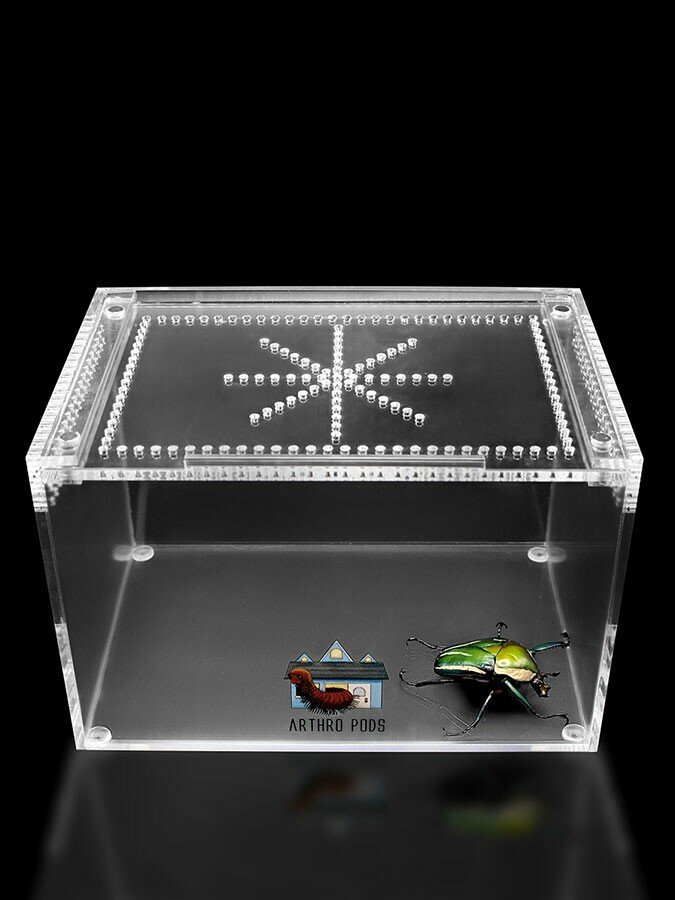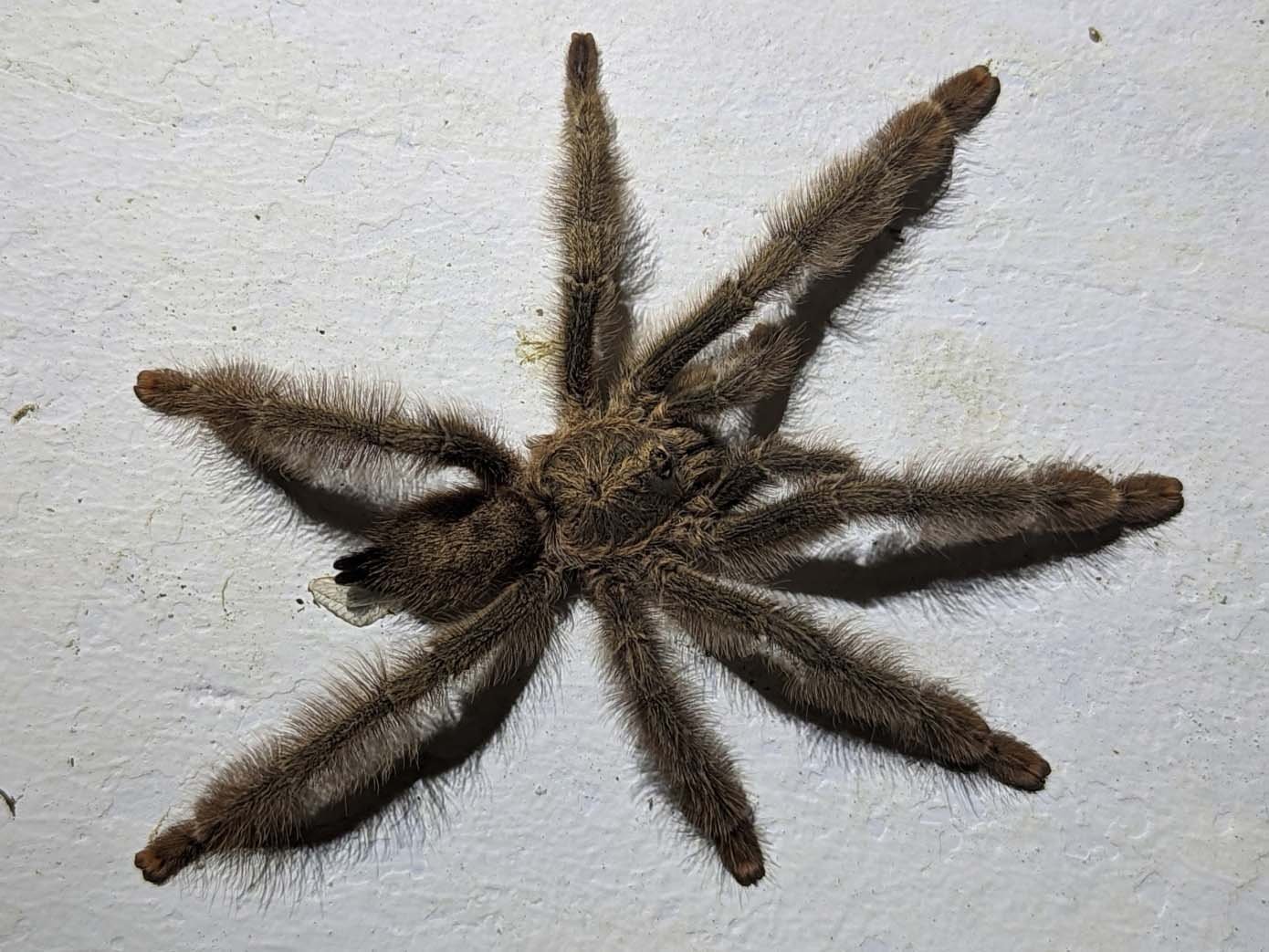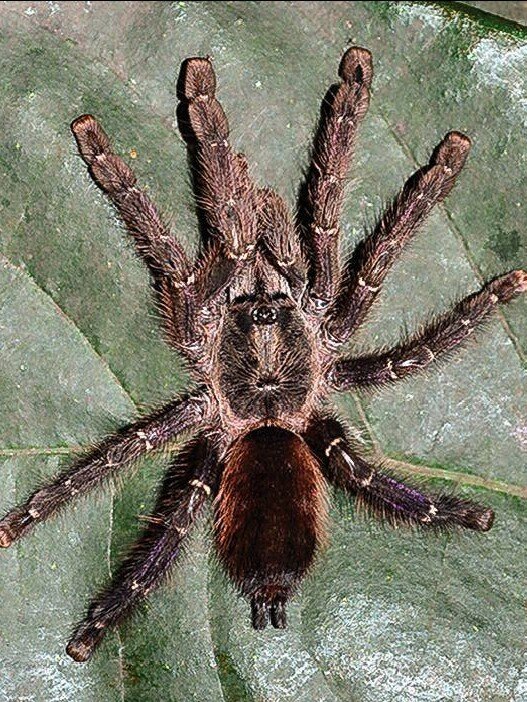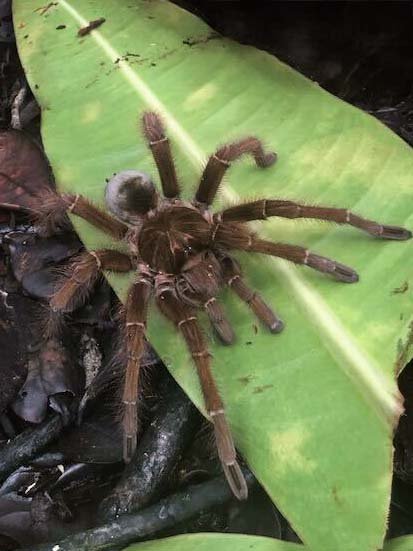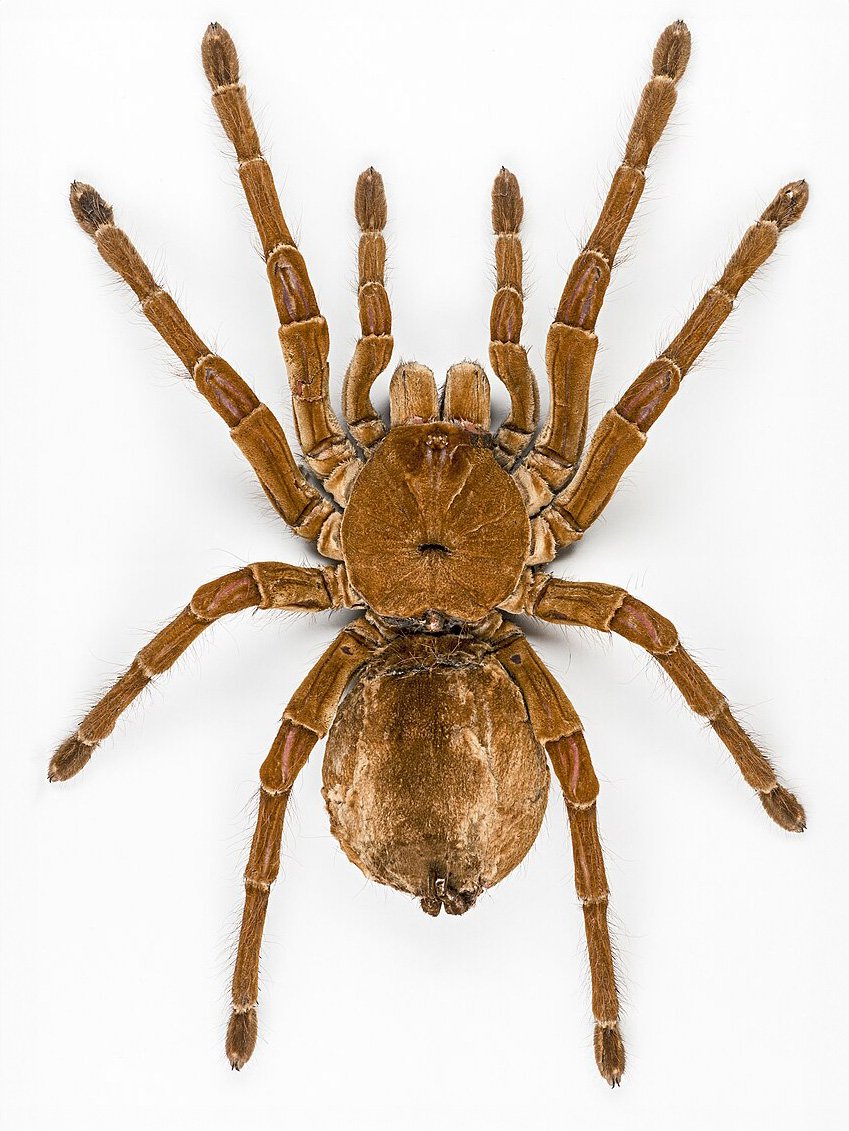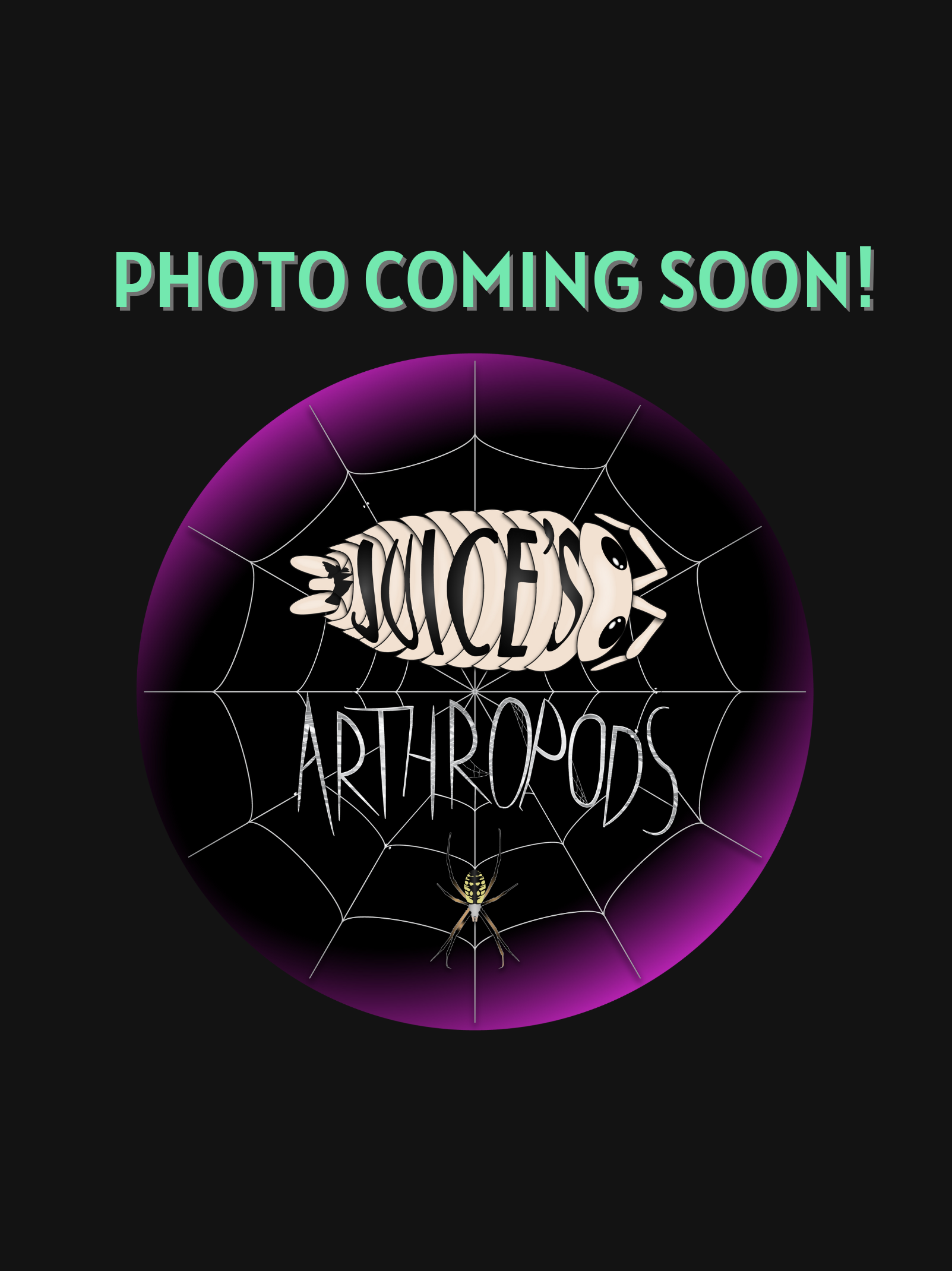Neoholothele incei
The Trinidad Olive Tarantula is a remarkable new world species in color and personality. They resemble the Hapalopus formosus or Pumpkin Patch Tarantula in coloration, but the similarities end here. The Trinidad Olive Tarantula is lightning fast and has a more medically significant bite than most New World tarantulas. They lack urticating hairs, instead following similar methodologies as the Psalmopoeus genus. But where the Trinidad Olive Tarantula reigns over other New World medically significant tarantulas is its ability to communalize them. That being said, do not ever purchase Trinidad Olive Tarantulas with the intent to communalize, as they will only live together if they are from the same egg sac and maintain proximity. Communal species should be purchased as communal, not individuals forced to live together.
The Trinidad Olive Tarantula is a remarkable new world species in color and personality. They resemble the Hapalopus formosus or Pumpkin Patch Tarantula in coloration, but the similarities end here. The Trinidad Olive Tarantula is lightning fast and has a more medically significant bite than most New World tarantulas. They lack urticating hairs, instead following similar methodologies as the Psalmopoeus genus. But where the Trinidad Olive Tarantula reigns over other New World medically significant tarantulas is its ability to communalize them. That being said, do not ever purchase Trinidad Olive Tarantulas with the intent to communalize, as they will only live together if they are from the same egg sac and maintain proximity. Communal species should be purchased as communal, not individuals forced to live together.

The Trinidad Olive Tarantula is a remarkable new world species in color and personality. They resemble the Hapalopus formosus or Pumpkin Patch Tarantula in coloration, but the similarities end here. The Trinidad Olive Tarantula is lightning fast and has a more medically significant bite than most New World tarantulas. They lack urticating hairs, instead following similar methodologies as the Psalmopoeus genus. But where the Trinidad Olive Tarantula reigns over other New World medically significant tarantulas is its ability to communalize them. That being said, do not ever purchase Trinidad Olive Tarantulas with the intent to communalize, as they will only live together if they are from the same egg sac and maintain proximity. Communal species should be purchased as communal, not individuals forced to live together.
What's the ideal diet for a Trinidad Olive Tarantula?
All Tarantulas can eat a variety of feeders. Stick to crickets, dubia roaches, silkworms, horned worms occasionally, and a superworm or mealworm as the occasional treat!
How should I keep a Trinidad Olive Tarantula?
We recommend starting with the Terrestrial Terrain small enclosure if under a ¼" -1.2" Spiderling (sling). When they are about 1" in size, you will want to upgrade to a medium or large Terrestrial Terrain enclosure. Feed them as slings once a week, twice if their opisthosoma (abdomen) looks small, but if the opisthosoma is wider than their prosoma (pneumothorax), then wait a couple of days to feed. For juveniles or adults, stick to feeding once a week, nothing larger than their opisthosoma. Make sure to keep a full water dish at all times; wider and deeper is fine. Your Tarantula can’t drown; they float on water.
How long could a Trinidad Olive Tarantula live?
Females are believed to only live around 7 years, and males do not exceed 2-3 years.
Photo courtesy of Wikipedia (CC BY-SA 2.5)




